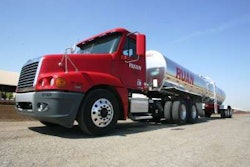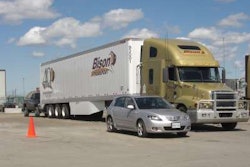Billing it as a major climate change initiative, the Department of Transportation and the Environmental Protection Agency on Tuesday, Sept. 15, proposed regulations that would require vehicle manufacturers to increase fuel economy and reduce greenhouse gas emissions for automobiles and light trucks. The proposal, which covers model years 2012 through 2016, is intended to set a single national light-duty standard that would satisfy federal requirements as well as those of California and other states.
The joint DOT-EPA proposal includes mpg requirements under the National Highway Traffic Safety Administration’s Corporate Average Fuel Economy Standards program and the first-ever national emissions standards under EPA’s greenhouse gas program. The proposed rule would increase average fuel economy by about 5 percent each year during the 2012-2016 period and would require that model year 2016 vehicles meet an estimated combined average emissions level of 250 grams of carbon dioxide per mile. Cars and light trucks could meet the carbon standard solely through increased fuel economy, though there would be other options for meeting the standard.
DOT and EPA estimate that under the plan the overall light-duty vehicle fleet would reach 35.5 mpg in model year 2016 – provided that manufacturers chose to achieve carbon dioxide emissions standards solely through fuel economy improvements. This would achieve the fuel economy standard mandated by Congress four years ahead of schedule.
NHTSA and EPA are providing a 60-day comment period that begins with publication of the proposal in the Federal Register. For more information on the proposal, click here for EPA and here for NHTSA.








